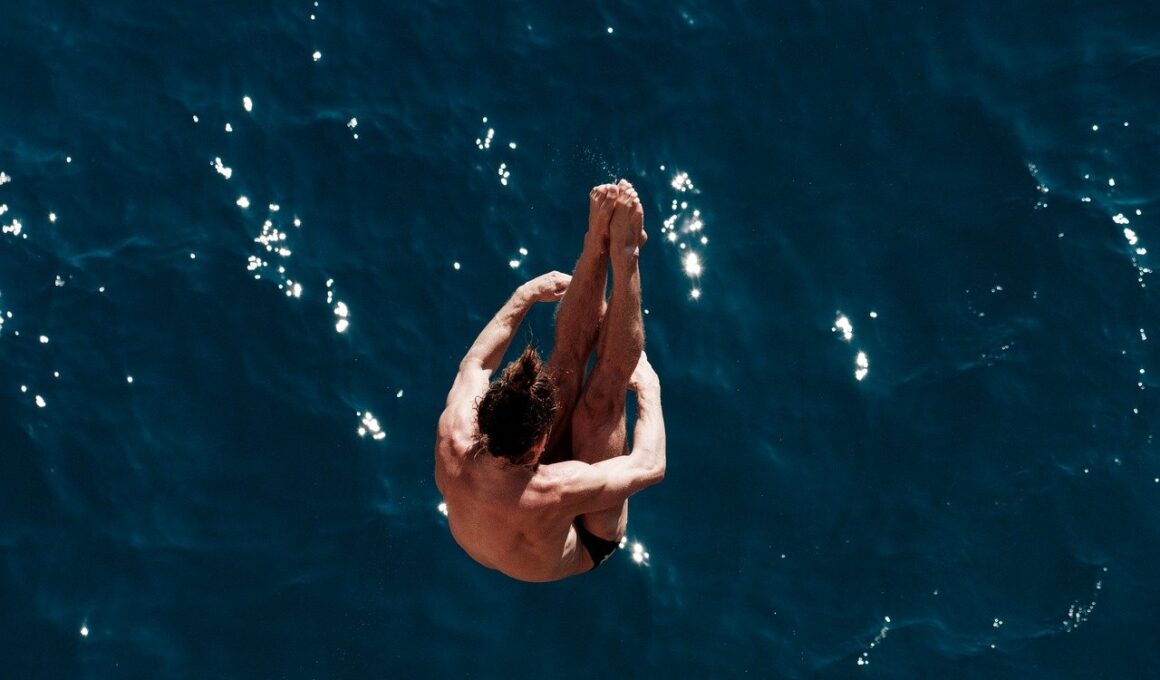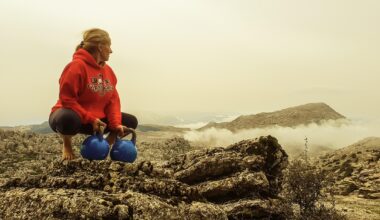Cliff Diving Photography: Capturing the Perfect Jump
Cliff diving is an exhilarating sport that combines skill, bravery, and a dash of artistry, making it a captivating subject for photography. Capturing the perfect jump involves not only the coordination of the diver but also a skilled understanding of the environment. The photographer needs to be aware of the best angles, lighting conditions, and timing to freeze that breathtaking moment. To achieve stunning photographs, one must consider the equipment used. Modern cameras with high-speed capabilities are ideal due to their ability to shoot fast-moving subjects. Additionally, using a wide-angle lens can help frame both the diver and the stunning backdrop of cliffs and ocean waves. Practicing patience is crucial as the conditions might not always be favorable. Observing the jumpers and predicting their movements can elevate your photography game. Colors, contrasts, and sharpness are vital components to bring life to the photographs. Utilizing natural lighting ensures the portraits are vivid and dramatic, truly capturing the leap into water. It also assists in creating images that evoke emotions experienced while cliff diving alongside the thrill of this sport. These factors culminate in memorable photographs.
Understanding the Art of Composition
Every great photograph tells a story, and understanding composition is crucial for capturing cliff diving moments. The rule of thirds is a fundamental guideline to consider when framing your shots. By dividing the image into thirds, both horizontally and vertically, place the diver at the intersection of these lines to achieve an engaging composition. Incorporating foreground elements like waves or rocky surfaces can add depth and context to the image. Additionally, framing the subject with natural elements such as branches or cliffs helps emphasize their jump. Lighting is equally important; try to shoot during golden hours for warmer tones and dramatic shadows. Adjusting exposure settings may be necessary due to the reflected sunlight on water. Always be mindful of your background; a clear or aesthetically pleasing backdrop can enhance the dramatic effect of the dive. Experimenting with different perspectives, such as shooting from above or below, can create unique and memorable images. Lastly, telling a complete story often means capturing more than the jump itself. Take some time to get candid shots of divers preparing, interacting, or celebrating.
Timing is one of the most critical aspects of cliff diving photography. Anticipating the moment before the diver leaps can provide stunning shots that encapsulate the thrill of the sport. Understanding diving techniques also helps; knowing when the diver will be in a specific posture allows you to focus your camera appropriately. Continuous shooting mode is an invaluable tool for photographers, allowing rapid shots in succession to ensure no moment is missed. Each dive offers a unique opportunity; divers utilize various techniques from flips to twists, making every jump distinct. Capturing the peak of these movements adds an element of excitement and danger to your shots. Use autofocus to keep your subject sharp, especially during high-speed action. Adjusting shutter speeds can help either freeze the action or add a sense of motion blur. Balancing aperture settings is vital; a wider aperture can create beautiful bokeh effects in the background while keeping the diver in sharp focus. Experimenting with the white balance setting can dramatically affect the mood of your photograph, providing a more dynamic and evocative representation of the moment.
Post-Processing Tips for Stunning Images
The work doesn’t stop after taking the photograph; post-processing is essential for creating stunning cliff diving images. Utilizing software like Adobe Lightroom or Photoshop can enhance colors and contrast, bringing out the vibrant details of water splashes or sunlit cliffs. Cropping can make a significant difference, focusing the viewer’s attention on the diver. Adjusting exposure can recover details lost due to bright conditions while maintaining the slight texture of splashes. Additionally, sharpening the image can enhance the clarity of the diver, emphasizing their movements. Applying noise reduction might be necessary if you shoot at higher ISO settings, especially in lower light situations. Different filters can generate unique results; a polarizing filter can deepen the blue of the water while reducing glare. Many photographers also enjoy experimenting with presets, which can provide a cohesive look to a series of photographs. During the editing process, ensure the images maintain a natural feel; over-processing can detract from the authenticity of the moment. Ultimately, these enhancements contribute to captivating images that resonate with viewers.
Capturing cliff diving requires not just skillful photography but also a deep understanding of the sport. It’s beneficial for photographers to immerse themselves in the diving culture. Observing divers during their jumps and actions yields useful insights into their techniques and preferences. Forming a rapport with the athletes can encourage more dynamic shots as your subjects feel comfortable around you. Sharing experiences and understanding their motivations may lead to more authentic captures, showcasing the thrill of the sport. Attending local competitions or diving exhibitions offers further insights into diverse diving styles and athletic performances. Building a network with divers and fellow photographers can foster opportunities for collaborative projects. Engaging with online forums or local diving clubs could broaden your perspective. When sharing your work, consider using social media to reach an audience that appreciates extreme sports. Platforms such as Instagram and Pinterest can showcase your captivating photographs, connecting you with other enthusiasts. Documenting your journey as a photographer in this niche not only builds your portfolio but inspires others to appreciate the beautiful combination of athletics and art in cliff diving.
Equipment Essentials for Cliff Diving Photography
To master cliff diving photography, selecting the right equipment is crucial. A DSLR or mirrorless camera is recommended due to their superior image quality and adaptability. Opt for lenses that cover a range of focal lengths to accommodate various shooting scenarios. A fast telephoto lens can be immensely helpful for capturing distant dives without sacrificing details. Investing in image stabilization technology is wise; it helps minimize shakiness during action shots. Additionally, using rain covers can protect your equipment, especially during splashdowns or rough weather. A sturdy tripod or monopod can provide stability for long exposure shots. As cliff diving often occurs in dynamic settings, carrying backup batteries and memory cards is wise. Photographers should also consider essential accessories such as filters for glare moderation or UV protection. A lens cleaning kit ensures your equipment remains free from dirt and water droplets. Staying organized in your gear will streamline the process, allowing quick transitions between shots. Lastly, familiarize yourself with the various settings on your camera; being prepared can maximize your chances for that perfect shot.
Cliff diving photography is about artistic expression and adventurous spirit. This exhilarating sport offers endless opportunities for photographers looking to combine visual storytelling with breathtaking action. The unique positions and angles that divers assume create visually striking images that resonate deeply with viewers. As your skills develop, the diversity in your photography will grow, showcasing the beauty in both the sport and the environment. You might even find yourself exploring more locations that offer dramatic cliffs and stunning backdrops. Divers worldwide practice their craft in various environments, all of which may enhance your portfolio. Engaging in cliff diving photography can lead you to extraordinary landscapes, from tropical oceans to rugged coastlines. Establishing personal goals, whether for artistic growth or published work, can guide your journey. Consider entering competitions or exhibitions that feature extreme sports photography, as these platforms can bring your talent to a broader audience. Sharing your passion and creativity with others may inspire future photographers to pursue their fascination with adventure sports. Ultimately, cliff diving photography is not just about capturing a moment; it’s about immersing oneself in a community celebrated for its bravery and artistry.


